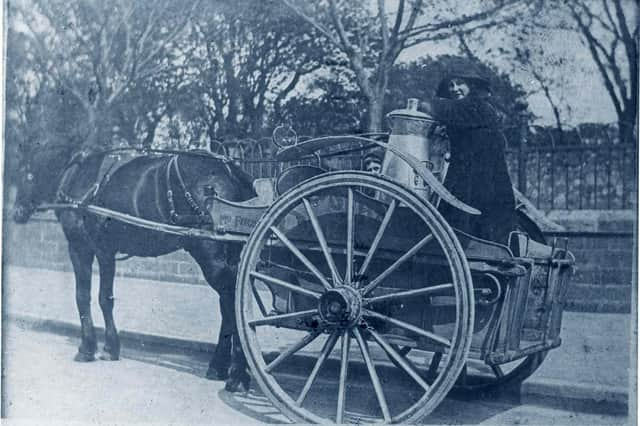Loss of local outlets reduced choice for customers


Back then, most houses only had a coal fire in the living room. That meant coal lorries, and coalmen, were a regular feature of everyday life. Most towns also had local outlets selling kindling (firewood), for lighting fires.
Coal fires meant ash and each fireplace had to be cleaned regularly. The ash was put out for the bin men in a metal bin with a lid, although I remember my grandmother using a pail. The bin men emptied whatever receptacle was at the front gate.
Advertisement
Hide AdAdvertisement
Hide AdSimilarly, most people had their milk delivered. As working horses disappeared, the deliveries were done using an electric float, long before anyone was concerned about climate change. As I recall, our milk came from the Co-op.
One trade sticks, pardon the pun, in my memory. Montrose, like most towns, had a local billposter, James Forsyth, who had succeeded a Mr Henderson from Brechin as an employee of the General Billposting Company. The billposters had a large barrow with a receptacle for the bills and, of course, a large bucket of paste. Bills were “pasted on both sides, usually battered with paste at an oblique angle on the wall, and then turned deftly round and placed neatly”. I recall seeing this being done when I was small and always marvelled at how skilful the billposters were. The potential for disaster must be considerable. There are very few billboards around now and it is years since I have seen anyone actually putting up a poster.
I have bemoaned the lack of local outlets before. Local menswear and women’s outfitters were commonplace, with Thornton’s and Adamson’s in Arbroath and Jessop’s and Mortimer’s in Montrose, Forfar and Brechin. That meant you could buy items from different makers, not just the same items from one of the large chains that populate our High Streets today. There were also two brewers in Montrose. Some readers will recall the Lochside Brewery but there was another down Ferry Street. In those less ‘Elf ‘n’ Safety times, dockworkers would send out for sixpence of ale. For this, they apparently got a whole bucketful, no doubt leading to the expression “He takes a good bucket”.